This time, we actually had seats on the bus. Hooray! The ride was very bumpy, as we were at the back of the bus, and due to the quality of the roads. We saw plenty of buses pass by with no windscreens, or windscreens made of what looked like clingfilm, with a hole cut for the driver to look through. On the bus, we discovered Ken had picked up two ticks at some point in the jungle. Unfortunately, the tools to deal with the ticks were in our big bags, in the back of the bus, so Ken had to wait to get rid of them. It took us six and a half hours to reach Kathmandu, and the bus stopped in a different place to where we were expecting. It was equidistant to our bed and breakfast, but we didn't know the way. Some back street wandering later, we were back at Zen Bed and Breakfast.
The Bed and Breakfast was not offering breakfast, due to the fuel strike and the lack of gas
. Yet they wanted to charge us the same price, so we bartered them down. It was still very cheap to stay there. They gave us a different room with a toilet seat (!) but it was smaller, smellier, and had a single duvet for a very small 'double' bed. They had no clean towels to give us either.
We went to our favourite nearby veggie restaurant and had an extremely hot chilli, whilst doing some planning. We got some chores done in the evening, including getting more passport photos printed and some documents printed off. There was no power when we returned, so we made do with small lights and head torches, and tried to ignore the fire hazard that was open candle flames on the stairway leading up to our room.
Unfortunately we had a disturbed night. A dog in the street below barked incessantly for hours, and Jayna was sick several times. As was our neighbour (no connection though). Saturday 31st did not start with our usual early morning, and we went for an inoffensive brunch at a cafe, before venturing out for the day.
We were aiming for Durbar Square, and saw some sights along the way. This included Thahity Chowk (a square), Kathesimbhu Stupa (down a side street), Bangemudha Square, and Indra Chowk (a busy intersection) with Akash Bhairab temple.
We purchased our tickets and went into Kathmandu Durbar Square
. Durbar Square was the generic name used to describe the plazas and areas outside of royal palaces. This one was in the centre of Kathmandu, with two more Durbar Squares in Patan and Bhaktapur, the other old royal palaces.
Seven of the temples in Kathmandu Durbar Square had been destroyed in the 2015 earthquake, with several more damaged. Even those that, to our eyes, looked fine, were buttressed with spindly looking bits of wood. Our first view was of some dangerously leaning buildings, which had people on top throwing bricks down to the floor. This was the rebuild effort, which was getting started in earnest. We wandered through the whole site, avoided the motorbikes which were inexplicably allowed through the area, grabbed some coffees, and re-visited our guide book to see what we had missed. After another wander through, these were our highlights: Waiting for the Kumari (living Goddess) to appear at the central window of her palace (she didn't, sadly), and going into the courtyard of her place
. The Garud Statue with it's hands together, facing the ruins of a temple destroyed in the earthquake. The colourful and angry looking Shiva, Kal Bhairab. The erotic carvings on the Jagannath temple. Shiva looking out of the window in Shiva Prahabi Mandir. The giant mask, hidden behind latticework in Seto Bhairab. The big bell and bigger drums. The ruins of an octagonal shaped temple. The slightly creepy eyes on the priest's house.
We finished a little earlier than we expected, so we walked to Swayambhu Temple, better known as Monkey Temple. We'd seen one small part of the temple from the bus the previous day, complete with monkeys clambering over it. We thought we should get a closer look. We walked for a couple of kilometres through some residential areas, and saw just how many piles of rubble there were, where houses once stood. When we reached the temple, we climbed the 365 steps to reach the top, and admired the monkeys and statues along the way. From the top, we took in the wonderful view over the city, and walked clockwise around the stupa (the correct way to walk). We went to find the rhesus monkeys and didn't have to look very hard, as they were clambering over buildings in a corner nearby. They soon moved onto the temple buildings and chased away the pigeons to eat their food. We walked down some steps to find a whole bunch of monkeys having a grooming session, and went for a wander. We took in some more stupas and temples, and so many more monkeys
. Our favourite was the World Peace Pond, with a statue spitting water from it's hand over a sign which said 'World Peace'.
We climbed back down the hill, negotiated a not ridiculous price for a taxi (damn that fuel crisis) and went back to the Thamel area.
We found Thamel to be much less overwhelming than two weeks previously. This, we realised, was because of the drastic reduction in the amount of traffic, with only about 20% of the usual volume passing through the streets, due to the fuel strike. The streets were still incredibly dusty and smoggy, because people built wood fires to cook food, as the gas and often electricity was not available. This hurt our delicate sinuses throughout our visit to Kathmandu.
In the evening, we had a nice relaxed meal in a nearby restaurant, and a nice relaxed evening in the bed and breakfast. This time, it had running hot water, and we had a great shower. Small things.
On Sunday 1st November, we were determined to make the most of our final day in Kathmandu. We had an expensive breakfast with great coffee, and took an expensive taxi to Boudhanath Stupa, a Buddhist stupa and one of the largest in the world. Unfortunately, we'd read that it had sustained some damage in the earthquake and this was greater than we feared. We found that the top five layers were destroyed, leaving the massive mandala (what the stupa sits on) and little else
. It no longer dominated the skyline like it once had. It was pleasing to see people working on the restoration. We walked clockwise around the stupa, went into a gate and walked around a huge revolving prayer wheel, and climbed some steps to see the restoration in progress. It was a little sad.
Next, we walked for a couple of kilometres through some posher neighbourhoods to reach Pashupatinath, the holiest temple in Nepal and one of the holiest temples in the world. It is revered and worshipped by both Hindus and Buddhists. We saw many outer shrines, said to be phallic symbols of Shiva, plus a few monkeys. We knew that we would not be allowed inside of the temple, as non-Hindus and non-Buddists, but thought it worth a visit anyway. It was indeed worth the visit, with a great view down over the temple complex from one side of the Bagmati river to the other, and with the rituals and cremations taking place. We stopped and watched as one cremation was well underway, and two more were starting their ceremonies before the flames were lit. These took place on ghats on the edge of the river. The ceremonies included putting the feet of the deceased into the river, shrouding the deceased in flowers, stripping and cleaning the body, circling the pyre clockwise three times with the body and then circling the pyre clockwise three times with the flame to light the fire, with the remains pushed into the river to float towards the holy river Ganges in India
. We watched as a widow, or possibly a mother, set the flames going, and her obvious grief, whilst the dead man's feet were still visible as the flames grew. It was gruesome and fascinating and satisfied our morbid curiosity.
On a bridge across the river, we saw a large crowd. An elderly gentleman stopped us and explained that we were seeing the pre-cremation ceremony, and went on to explain various aspects of what was happening. He told us that usually, only babies under six months old, and holy men, were buried, as they were considered pure. Everyone else was cremated. He pointed out a hospice on the river bank, where people were taken when it was known they would soon die. These people would have the feet put into the river before they died, as well as after, to aid them on their way to reincarnation. He explained that Hindus usually cremate their dead within a day of the death, whereas Buddhists wait for around three days. He showed us the ghats still reserved for royalty and aristocracy, and explained that whilst the caste system had been abolished, it was still present in people's minds when it came to important ceremonies
. He showed us the Karma Sutra temple, predictably covered in erotic carvings. We were lucky to speak to him as he was full of information!
We left behind the choking smoke and negotiated a taxi to take us to Patan Durbar Square. This one had less obvious damage in comparison to Kathmandu's Durbar Square. It was picturesque and pretty, with lots of statues of elephants and lions, temples in abundance, carvings, and coffee shops. We stopped for lunch, which was not great, and were chased to buy a ticket by the ticket man. This done, we took our time admiring the buildings and the fact that they hadn't fallen down in the earthquakes.
After leaving Patan Durbar Square, we headed north a couple of blocks to the Hiryanya Varna Mahabihar, otherwise known as the Golden Temple. It was very ornate, with it's golden colour and remarkable carvings. After having had our fill, we went to the second Kumari's place, and had a wander in her courtyard. This living Goddess we could have seen and been blessed by. We ummed and ahhhed about this for a few minutes. In the end, we decided against going to see her, as it felt disingenuous to go and be blessed by someone when we didn't believe in the blessing. We wanted to passively see her, but not to interact. Sadly, that wasn't possible, so we left and got a taxi back to Thamel, for our final night in Nepal.
Nepal is quite a country. While still in the country, we were saying we would like to go back! Though we were a bit done with Kathmandu, trekking in the Himalayas was simply awesome, and with so many different routes to choose from we could have spent much longer there. Chitwan National Park also gave wildlife spotting opportunities that we didn't have time for, such as three day long safaris in the park. Plus with so many more species to see, it was an exciting prospect to revisit the area (March time is apparently a good time to go). In general, the food was great (we love momos), things were pretty cheap, but the fuel crisis was causing significant difficulties. The people were lovely and friendly, and the landscape was awe-inspiring. There were very few effects from the massive 2015 earthquakes that were causing problems, other than the lack of tourists. As a very poor country, Nepal can use all the tourists it can get. If you like nature, pretty scenery and hiking, consider Nepal for your next holiday!
Back to Kathmandu
Friday, October 30, 2015
 Kathmandu, Nepal
Kathmandu, Nepal
Other Entries
-
67Temple-tastic Tainan
Sep 1248 days prior Tainan, Taiwanphoto_camera29videocam 0comment 0
Tainan, Taiwanphoto_camera29videocam 0comment 0 -
68Kenting town and national park
Sep 1446 days prior Kenting, Taiwanphoto_camera27videocam 0comment 0
Kenting, Taiwanphoto_camera27videocam 0comment 0 -
69Hualien and the Taroko Gorge
Sep 1743 days prior Hualien, Taiwanphoto_camera24videocam 0comment 0
Hualien, Taiwanphoto_camera24videocam 0comment 0 -
70Back to Taipei
Sep 1941 days prior Taipei, Taiwanphoto_camera18videocam 0comment 0
Taipei, Taiwanphoto_camera18videocam 0comment 0 -
71Tokyo, three proper Cornish boys & a Cornish maid
Sep 2139 days prior Tokyo, Japanphoto_camera33videocam 0comment 0
Tokyo, Japanphoto_camera33videocam 0comment 0 -
72Nagoya and the Japanese Grand Prix
Sep 2535 days prior Nagoya, Japanphoto_camera82videocam 0comment 0
Nagoya, Japanphoto_camera82videocam 0comment 0 -
73Osaka, Nara and Kobe
Sep 2832 days prior Osaka, Japanphoto_camera66videocam 0comment 0
Osaka, Japanphoto_camera66videocam 0comment 0 -
74Kyoto Now
Oct 0228 days prior Kyoto, Japanphoto_camera82videocam 0comment 0
Kyoto, Japanphoto_camera82videocam 0comment 0 -
75Hiroshima and Miyajima
Oct 0723 days prior Hiroshima, Japanphoto_camera40videocam 0comment 0
Hiroshima, Japanphoto_camera40videocam 0comment 0 -
76OK Okayama
Oct 0921 days prior Okayama, Japanphoto_camera14videocam 0comment 0
Okayama, Japanphoto_camera14videocam 0comment 0 -
77Back to Osaka
Oct 1119 days prior Osaka, Japanphoto_camera0videocam 0comment 0
Osaka, Japanphoto_camera0videocam 0comment 0 -
78China, China and China in transit
Oct 1218 days prior Beijing, Chinaphoto_camera4videocam 0comment 0
Beijing, Chinaphoto_camera4videocam 0comment 0 -
79Crazy Kathmandu
Oct 1317 days prior Kathmandu, Nepalphoto_camera1videocam 0comment 0
Kathmandu, Nepalphoto_camera1videocam 0comment 0 -
80Tranquil Pokhara
Oct 1515 days prior Pokhara, Nepalphoto_camera2videocam 0comment 0
Pokhara, Nepalphoto_camera2videocam 0comment 0 -
81Trekking in the Himalayas
Oct 1713 days prior Jomsom, Nepalphoto_camera129videocam 0comment 0
Jomsom, Nepalphoto_camera129videocam 0comment 0 -
82Back to Pokhara
Oct 255 days prior Pokhara, Nepalphoto_camera7videocam 0comment 0
Pokhara, Nepalphoto_camera7videocam 0comment 0 -
83Chitwan National Park and elephant riding!
Oct 264 days prior Sauraha, Nepalphoto_camera70videocam 0comment 0
Sauraha, Nepalphoto_camera70videocam 0comment 0 -
84Back to Kathmandu
Oct 30 Kathmandu, Nepalphoto_camera59videocam 0comment 0
Kathmandu, Nepalphoto_camera59videocam 0comment 0 -
85Delhi: Never again
Nov 023 days later Delhi, Indiaphoto_camera26videocam 0comment 0
Delhi, Indiaphoto_camera26videocam 0comment 0 -
86Agra and the Taj Mahal
Nov 056 days later Agra, Indiaphoto_camera34videocam 0comment 0
Agra, Indiaphoto_camera34videocam 0comment 0 -
87Jaipur and the Amber Fort
Nov 078 days later Jaipur, Indiaphoto_camera30videocam 0comment 0
Jaipur, Indiaphoto_camera30videocam 0comment 0 -
88Candolim all inclusive
Nov 1011 days later Candolim, Indiaphoto_camera45videocam 0comment 0
Candolim, Indiaphoto_camera45videocam 0comment 0 -
89Palolem and idyllic Patnam
Nov 2223 days later Palolem, Indiaphoto_camera16videocam 0comment 0
Palolem, Indiaphoto_camera16videocam 0comment 0 -
90Kolkata - final stop in India (hooray!)
Nov 2526 days later Kolkata (Calcutta), Indiaphoto_camera5videocam 0comment 0
Kolkata (Calcutta), Indiaphoto_camera5videocam 0comment 0 -
91Banging Bangkok
Nov 2728 days later Bangkok, Thailandphoto_camera50videocam 0comment 0
Bangkok, Thailandphoto_camera50videocam 0comment 0 -
92Angkor Wat and Siem Reap
Dec 0233 days later Siem Reap, Cambodiaphoto_camera135videocam 0comment 0
Siem Reap, Cambodiaphoto_camera135videocam 0comment 0 -
93Battambang and the bamboo train
Dec 0536 days later Battambang, Cambodiaphoto_camera29videocam 0comment 0
Battambang, Cambodiaphoto_camera29videocam 0comment 0 -
94Phnom Penh and Cambodia's tragic history
Dec 0738 days later Phnom Penh, Cambodiaphoto_camera45videocam 0comment 0
Phnom Penh, Cambodiaphoto_camera45videocam 0comment 0 -
95Kratie river dolphins
Dec 1041 days later Kratie (Kracheh), Cambodiaphoto_camera26videocam 0comment 0
Kratie (Kracheh), Cambodiaphoto_camera26videocam 0comment 0 -
96Back to Phnom Penh
Dec 1243 days later Phnom Penh, Cambodiaphoto_camera0videocam 0comment 0
Phnom Penh, Cambodiaphoto_camera0videocam 0comment 0 -
97What can Koh Rong, will Koh Rong
Dec 1344 days later Koh Rong, Cambodiaphoto_camera31videocam 0comment 0
Koh Rong, Cambodiaphoto_camera31videocam 0comment 0 -
98Sihanoukville, final stop in Cambodia
Dec 1647 days later Sihanoukville, Cambodiaphoto_camera4videocam 0comment 0
Sihanoukville, Cambodiaphoto_camera4videocam 0comment 0 -
99Back to Bangkok
Dec 1748 days later Bangkok, Thailandphoto_camera0videocam 0comment 0
Bangkok, Thailandphoto_camera0videocam 0comment 0 -
100Koh Phangan for Thai island time
Dec 1849 days later Koh Phangan, Thailandphoto_camera23videocam 0comment 0
Koh Phangan, Thailandphoto_camera23videocam 0comment 0 -
101A Khao Lak Christmas
Dec 2354 days later Khao Lak, Thailandphoto_camera81videocam 0comment 0
Khao Lak, Thailandphoto_camera81videocam 0comment 0 -
102... and a Mandalay New Year!
Dec 3162 days later Mandalay, Myanmarphoto_camera52videocam 0comment 0
Mandalay, Myanmarphoto_camera52videocam 0comment 0

 Kathmandu, Nepal
Kathmandu, Nepal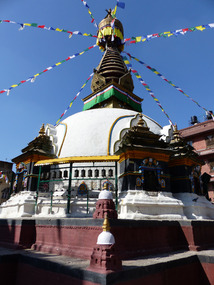
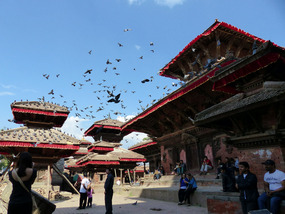
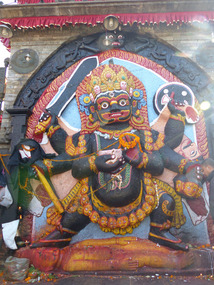
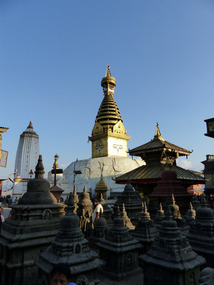
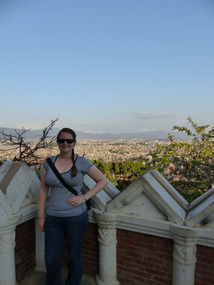
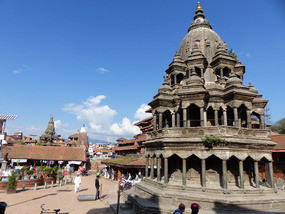
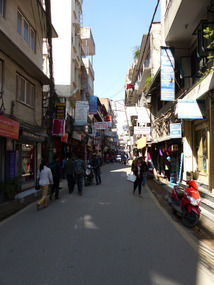








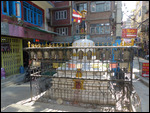
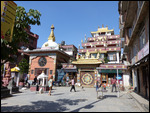
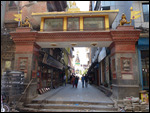
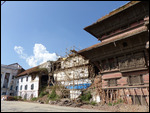
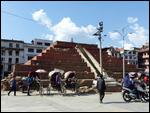
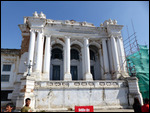
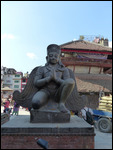
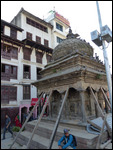
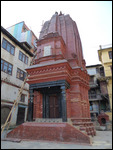
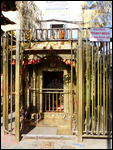
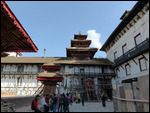
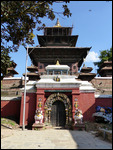
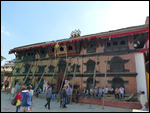
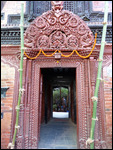
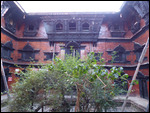
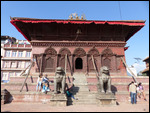
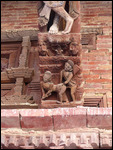
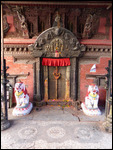
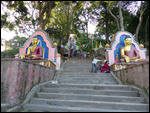
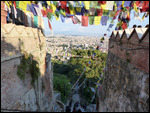


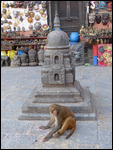
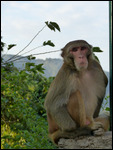
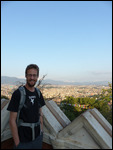
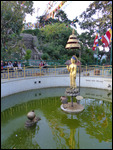
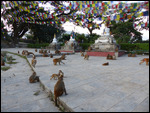


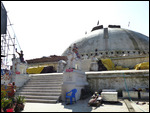
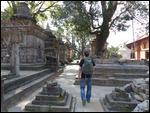
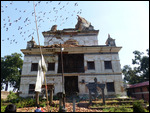
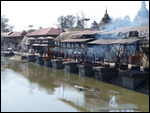
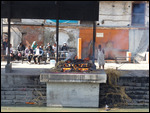
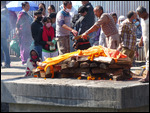
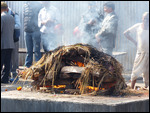
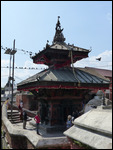
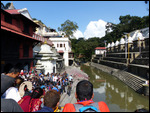
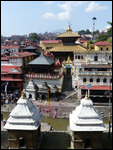
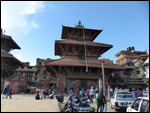
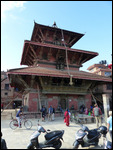
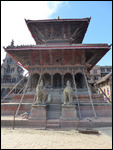
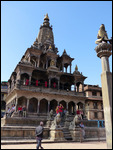
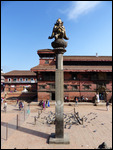
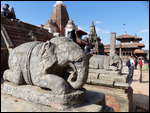
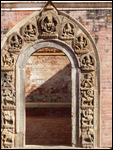
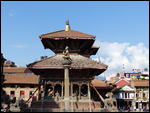
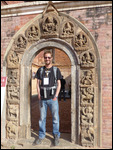
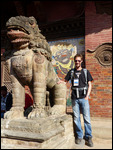

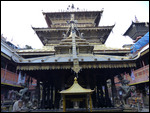
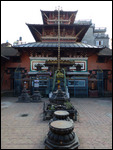
2025-05-23